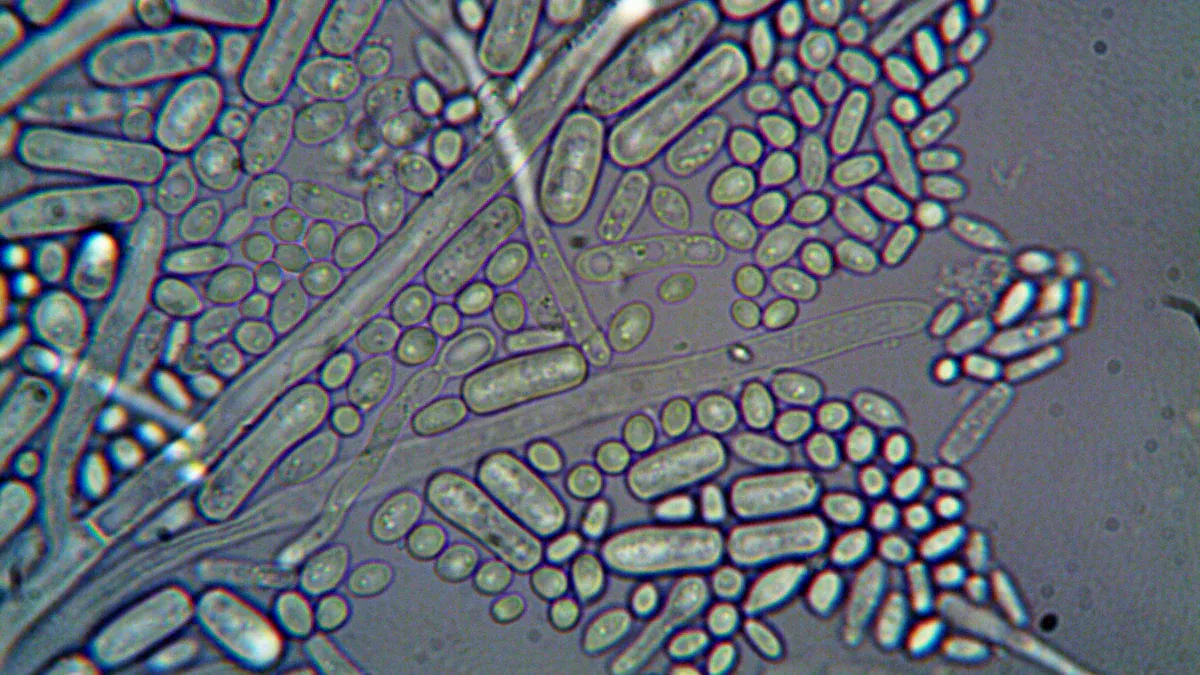3 easy steps for finite element analysis of Nitinol tubing expansion

You can get good results with finite element analysis of nitinol tubing expansion by using a trusted method. Nitinol’s superelastic behavior is hard to work with, but finite element analysis can show this with great detail. Researchers checked their models with real data from nitinol stents, and the simulation results were very close to the stress-strain curves and phase changes. When you use this process, you can see stress, strain, and shape changes clearly, which helps you check and improve your designs with confidence.
Key Takeaways
Make a model of Nitinol tubing by picking important shapes like wire thickness and bundle size. This helps the model look like real stents. Use smaller mesh in spots where there is a lot of bending or phase changes. This helps you see stress and strain better. Use bigger mesh in other places to save computer power. Set up boundary conditions and loading that are like real-life tests. This makes your simulation results more reliable and helpful. Use a special superelastic material model that is set up with real test data. This helps show Nitinol’s special phase changes when it expands. Check your simulation by comparing it to real test data. Change your model until the results are very close. This helps you make better designs and improvements.
Model Setup

Geometry Creation
First, you make a model of your Nitinol tubing. For stents or tubes, you must pick some main geometric details. These are wire diameter, ring mean diameter, number of turns, and bundle diameter. The table below lists the important parameters you need:
Parameter | Description |
|---|---|
Wire diameter | Diameter of the individual Nitinol wire (mm) |
Ring mean diameter | Mean diameter of the formed ring (mm) |
Number of turns | Number of wire turns forming the ring bundle |
Bundle diameter | Diameter of the wire bundle cross-section (mm) |
You can use the bundle diameter to wire diameter ratio to check if your model is like real nitinol stents. In finite element modeling, beam elements are used for wires. Shell elements are used for the bundle surface. This helps you see the real shape and how it acts when expanding.
Mesh Refinement
Mesh refinement is very important for good results in finite element analysis of nitinol tubing expansion. You should use a finer mesh where you think there will be lots of bending or phase transformation. These spots are usually near bends or where tubing touches other surfaces. A fine mesh helps you see stress and strain changes better. It also helps you find phase transformation zones, which matter for nitinol stents.
Tip: Begin with a coarse mesh for the whole model. Then, make the mesh finer only in the most important areas. This saves time and computer power.
Boundary Conditions
You need to set up boundary conditions that are like real tests. Researchers use different experimental boundary conditions to copy nitinol expansion and how it interacts. These include:
Displacement-controlled cyclic loading and tensile testing
Strain amplitudes and mean strains like those in cardiovascular implants
Cyclic loading to check fatigue behavior
Full-field strain measurements using digital image correlation (DIC)
Specimen shapes such as diamond, dogbone, and C-shaped dogbone
Loading conditions from animal, cadaver, and patient studies
You should use these conditions in your finite element analysis. This helps your simulation match real nitinol stents and makes your results trustworthy. Good boundary conditions also let you check your model with real data and help you make your design better.
Material and Loading Definition
Superelastic Material Model
You have to set the superelastic properties for nitinol in your simulation. Nitinol can switch between austenite and martensite phases. This happens when you put stress on it or change its temperature. This phase change is what gives nitinol its special superelastic behavior. You need to use a special material model for this in your finite element analysis. Use data from axial tensile tests at both room and body temperature. This helps you see the real stress-strain response. Calibrate your material properties with test results from single wires and multi-wire samples. This step makes sure your model acts like real nitinol during expansion.
Expansion and Cyclic Loading
You should use loading conditions that are like real life for your nitinol tubing model. Cyclic loading tests show how the tubing acts under repeated stress. These tests help you guess how long the tubing will last and when it will stabilize. For example, researchers use cyclic axial compression, bending, twisting, and pulsatile loads to copy real-life situations. Fatigue life depends on nitinol’s makeup, microstructure, and how you load it. Thermomechanical fatigue testing uses both mechanical and temperature cycles. This shows how phase transformation changes fatigue. Fractographic analysis can show where cracks start and how they grow. Using these methods makes your simulation more correct and dependable.
Note: If you ignore complex loading, you might think the tubing lasts longer than it really does. Always use realistic cyclic loading to get results you can trust.
Constraints Application
You need to set up the right constraints so your simulation matches real nitinol expansion. Use geometry from stent photos and laser-cut drawings. Measure the size after electropolishing to be exact. Pick mesh discretization carefully. Linear beam elements work well after checking mesh sensitivity. Calibrate material properties from tensile tests at 25°C and 37°C. Set interaction properties with a general contact algorithm. Use a friction coefficient of 0.2 for parts that touch. Check your model by comparing it to experimental force-displacement curves. Make sure the difference is less than 10%.
Constraint Parameter | Description and Measurement Method |
|---|---|
Geometry Reconstruction | Based on stent images and drawings; dimensions measured after electropolishing |
Mesh Discretization | Linear beam elements (B31) after mesh sensitivity analysis |
Material Properties | Calibrated from axial tensile tests at 25°C and 37°C |
Interaction Properties | General contact algorithm; friction coefficient 0.2; validated with free release tests |
Validation | Compare with experimental force-displacement curves; keep differences below 10% |
Finite Element Analysis of Nitinol Tubing Expansion

Simulation Execution
Start your finite element analysis by setting up the solver. Pick an incremental or iterative solver for nitinol’s superelastic behavior. These solvers help you follow phase changes and big shape changes. Before running everything, check your model for mistakes. Make sure boundary conditions, constraints, and material properties are right.
Run a small test simulation first. This helps you find problems early. Watch for solver warnings or errors. If you see convergence problems, make your mesh finer or change the time step. Use automatic stabilization if your model struggles with contact or big deformations. When you are ready, run the full simulation. Save your results at each step so you can look back later.
Tip: Always watch reaction forces and displacement during the simulation. This helps you spot strange behavior quickly.
Results Interpretation
After the simulation ends, you need to look at the results. Check the stress and strain in the nitinol tubing. Focus on spots with high deformation or phase changes. These areas may show where the tubing could fail or change shape.
Look at the phase transformation zones. Use color maps to see where austenite turns into martensite. This tells you how nitinol reacts to loading. Review the tubing’s shape after deformation. Make sure it matches what you expect from real tests or use.
You should also compare the force needed for expansion with experiment values. If your simulation shows much higher or lower forces, check your material model and boundary conditions. Good results help you design better nitinol stents and tubing.
Validation and Optimization
Validation is an important step in finite element analysis. You need to make sure your simulation matches real-world behavior. Use different experimental validation metrics to check your results:
Do compression testing of nitinol stents with a universal testing machine. Apply load and measure the reaction force.
Compare the force-displacement curves from your physical tests and your finite element modeling results.
Focus on how the stent acts under load. Compress the stent to a target diameter, like 5 mm, and compare the supporting force from both experiment and simulation.
These steps help you check the accuracy of your finite element analysis of nitinol tubing expansion. If you see differences, change your material properties, mesh, or boundary conditions. Run the simulation again until your results match the experimental data.
Once your model is validated, you can improve the geometry for better performance. Change the wire diameter, bundle shape, or number of turns. Run new simulations to see how these changes affect stress, strain, and expansion. This helps you make nitinol stents that last longer and work better in real life.
Note: The finite element method lets you test many designs before making real prototypes. This saves time and resources.
You can learn how to study nitinol tubing by using three easy steps. This process helps you get results you can trust. It also lets you check if your simulation matches real data.
You look at force and displacement at different temperatures. You use special material models to show superelastic behavior.
You check fatigue safety and strain with real tests.
For your next projects, you can:
Make your models of biomechanical loads more realistic.
Make fatigue rules better and see how strain changes in small areas.
Use statistics to make your designs better.
When you use this method, you get results you can believe. You also build a good base for more nitinol research.
FAQ
What makes Nitinol tubing special for medical devices?
Nitinol tubing has superelastic and shape memory properties. These let devices go back to their shape after bending or stretching. Doctors use Nitinol in stents and implants because it works well in the body.
How do you choose the right mesh size for your model?
First, use a coarse mesh for your model. Make the mesh finer where stress or phase transformation is high. This way, you see important details but keep the simulation fast.
Why do you need to validate your simulation results?
You must check your simulation with real test data. This makes sure your model gives correct results. Validation helps you trust your design before making it.
Can you use the finite element method for other materials?
Yes, the finite element method works for many materials. You can study metals, plastics, and even tissues. The method helps you see how materials act under different loads.
See Also
A Detailed Process for Making Nitinol Microtubing Used Neurovascularly
Evaluating Tensile Strength Between Nitinol And Stainless Steel Tubing
The Manufacturing Process Behind Medical-Grade Nitinol Tubing Explained
Discovering Various Uses Of Nitinol Tubing Within Healthcare Technology
Choosing The Right Supplier For Your Nitinol Tubing Requirements

